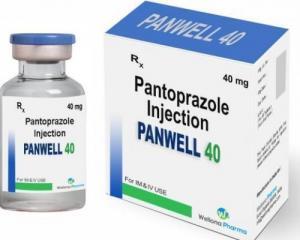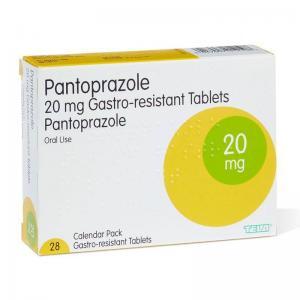Pantoprazole (Protonix)
Are you looking for a website to buy Pantoprazole (Protonix)? You can purchase Pantoprazole (Protonix) from our partner, an online pharmacy store. We highly recommend this online store since you will find high-quality pills available at low price. Next-day shipping will help to deliver your order to you as soon as possible.
Other names of Protonix
Aciban, Acipan, Anagastra, Anesteloc, Anulacid, Apazol, Apo-Panto, Apton, Caprol, Ciproton, Contix, Contracid, Controloc, Cool pan, Digene, Eupanol, Eupantol, Fulpan, Gastromax, Gastropan, Gastroprozal, Gastrowell, Hasanloc, IPP, Inipomp, Kuppam, Leminter, Loxid, Lupipan, Natrii pantoprazolum, Newpan, Noacid, Nolpaza, Noprop, Normocid, Oritop, Ozepran, Pacid, Palio, Panbloc, Panbrabene, Pandev, Pandon, Pangest, Panloc, Panmicid, Panogastin, Panopaz, Panpac, Panpot, Panpra, Panprabene, Panpro, Panprozole, Panrazol, Pansa, Pansafe, Pansec, Pantabol, Pantac, Pantacid, Pantact, Pantagon, Pantaltius, Pantaz, Pantecta, Panthec, Pantid, Pantin, Pantip, Pantium, Panto, Panto basics, Panto-byk, Pantobex, Pantoc, Pantocal, Pantocalm, Pantocar, Pantocarm, Pantocas, Pantocid, Pantocip, Pantodac, Pantodar, Pantofin, Pantogamma, Pantogen, Pantoloc, Pantolup, Pantonis, Pantonix, Pantop, Pantopan, Pantopaz, Pantopep, Pantopra, Pantoprazol, Pantoprazolum, Pantoprem, Pantor, Pantorc, Pantosec, Pantosil, Pantotab, Pantozol, Pantozol-Rifun, Pantozole, Pantpas, Pantra, Pantrafar, Pantrat, Pantry, Pantul, Pantus, Panum, Panz, Panzat, Panzo, Panzol, Penkool, Penta, Pentagon, Pentalink, Pentastar, Pentium, Pentozed, Pents, Pepcinova, Pepmark, Peptac, Peptazol, Pepticool, Peptovit, Pepzol, Peucetol, Pms-pantoprazole, Pole, Pranzol, Praoz, Prasocid, Prazocid, Prazolan, Prazomyl, Prazosan, Prazotel, Progen, Proloc, Prolus-dsr, Propanta, Propanz, Protin-p, Protium, Protonex, Protonil, Pulcet, Rarozol, Razon, Regad, Rifun, Segregam, Singastril, Sipar, Somac, Sunpraz, Supacid, Supracam, Tecta, Tevozol, Tifizol, Tonval, Topan, Topra, Topraz, Topzole, Tropaz, Trupan, Ugarpan, Ulcemex, Ulcened, Ulcepraz, Ulceron, Ulcoreks, Ulcotenal, Ulrid, Ulserch, Unigastrozol, Zacpac, Zamol, Zanpan, Zepoxin, Zimpax, Zipant, Zipantola, Ziprol, Zolpanz, Zolpeptid, Zolpra, Zoltex, Zoltum, Zovanta, Zovanta-40, Zurcal, Zurcale, Zurcazol.
 |
 |
 |
 |
 |
 |
 |
 |
 |
 |
 What Is Protonix?
What Is Protonix?
Pantoprazole is a proton pump inhibitor (PPI) medication that reduces stomach acid production. It is commonly prescribed for treating conditions where excess stomach acid can cause problems, such as gastroesophageal reflux disease (GERD), peptic ulcers, and Zollinger-Ellison syndrome. Pantoprazole helps alleviate symptoms such as heartburn, acid regurgitation, and stomach pain.
Pantoprazole works by inhibiting the proton pump in the stomach lining (specifically, the H+/K+ ATPase enzyme), which is responsible for the final step in acid production. Reducing acid secretion helps relieve symptoms and promote the healing of the esophagus and stomach lining.
Pantoprazole is usually taken orally and is available in different formulations, including delayed-release tablets and oral suspension.
The duration of treatment with pantoprazole can vary based on the specific condition being treated. Short-term use may be appropriate for conditions like peptic ulcers, while long-term maintenance therapy may be recommended for GERD.
Common side effects may include headache, dizziness, nausea, and abdominal pain. Serious side effects are rare but can include severe allergic reactions and certain gastrointestinal infections.
Long-term use of PPIs like pantoprazole may be associated with certain risks, and healthcare providers may monitor patients for potential complications such as bone fractures, kidney disease, and magnesium deficiency.
Pantoprazole can interact with other medications, and you must inform your healthcare provider about all the medications and supplements you are taking.
As with any medication, it’s crucial to use pantoprazole under the guidance of a healthcare professional. Discuss your questions or concerns about pantoprazole with your healthcare provider for personalized advice and information.
Pharmacokinetics
Pantoprazole is rapidly absorbed, and peak plasma-pantoprazole concentrations are achieved about 2 to 2.5 hours after oral administration. The oral bioavailability is about 77% with the enteric-coated tablet formulation and does not vary after single or multiple doses. Pantoprazole is about 98% bound to plasma proteins. It is extensively metabolized in the liver, primarily by the cytochrome P450 isoenzyme CYP2C19, to desmethyl-pantoprazole small amounts are also metabolized by CYP3 A4, CYP2D6, and CYP2C9.
Metabolites (about 80%) are excreted in the urine, with the remainder being excreted in feces via the bile. The terminal elimination half-life is about 1 hour and is prolonged in hepatic impairment. The half-life in patients with cirrhosis was 3 to 6 hours. Although the elimination half-life has been reported to be 3.5 to 10 hours in slow metabolism, minimal accumulation occurs with once-daily dosing.
Bioavailability
A suspension of pantoprazole in a sodium bicarbonate solution was rapidly absorbed, and peak plasma concentrations were comparable to those of the tablet. However, the suspension’s bioavailability was about 25% lower than that of the tablet. The amount of sodium bicarbonate used may affect the bioavailability.
How It Works
Protonix suppresses the final step in gastric acid production by binding to two sites of the (H+, K+)-ATPase enzyme system at the secretory surface of the gastric parietal cell. This effect is dose-related and leads to inhibition of basal and stimulated gastric acid secretion irrespective of the stimulus. The binding to the (H+, K+)-ATPase results in a duration of antisecretory effect that persists for longer than 24 hours.
Clinical Study Results
The efficacy of Protonix was established in more than 100 clinical trials worldwide in more than 11,000 patients. One multicenter study in the US compared 10 mg, 20 mg, or 40 mg Protonix once daily to placebo in 603 patients with reflux symptoms and endoscopically diagnosed EE of grade 2 or higher. At both 4 and 8 weeks of follow-up, patients who took Protonix experienced significantly greater healing rates and relief of symptoms than those who took placebo.
For example, at week 4, healing rates in the 10 mg, 20 mg, and 40 mg Protonix groups were 45.6%, 58.4%, and 75.0%, respectively, compared to 14.3% for placebo. The corresponding rates for week 8 were 66.0%, 83.5%, and 92.6% for the Protonix groups versus 39.7% for placebo. A significantly greater proportion of patients taking the 40 mg Protonix dose experienced relief of daytime and nighttime heartburn and the absence of regurgitation starting from the first day of treatment compared to placebo. Moreover, patients taking Protonix consumed fewer antacid tablets each day.
Another multicenter US study compared Protonix (20 mg and 40 mg) with nizatidine (150 mg twice daily) in 243 patients with reflux symptoms and endoscopically diagnosed EE of grade 2 or higher. Protonix was significantly more effective for improving healing and relieving symptoms than nizatidine. At week 4, healing rates in the 20 mg and 40 mg Protonix groups were 61.4% and 64.0%, respectively, compared to 22.2% for nizatidine. The corresponding rates for week 8 were 79.2% and 82.9% for the Protonix groups versus 41.4% for nizatidine. A significantly greater proportion of patients taking Protonix experienced complete relief of nighttime heartburn and regurgitation starting from the first day of treatment than the nizatidine group. Moreover, patients taking Protonix consumed fewer antacid tablets daily than nizatidine patients.
Protonix (pantoprazole sodium) has also been effective in healing duodenal ulcers (DU). A Brazilian study compared 40 mg Protonix to 300 mg ranitidine in 222 patients with DU. After two weeks of treatment, significantly more patients taking Protonix experienced ulcer healing (97.1% for Protonix, 74.5% for ranitidine) and remission of symptoms (97.6% for Protonix, 77.5% for ranitidine).
Uses and Administration
Pantoprazole is a proton pump inhibitor with actions and uses similar to those of omeprazole. It is given as the sodium salt, but doses are expressed in terms of the base. Pantoprazole sodium 11.28 mg is equivalent to about 10 mg of pantoprazole. Once-daily doses should be taken in the morning. In treating gastro-oesophageal reflux disease, the usual oral dose is 20 to 40 mg once daily for four weeks, increased to 8 weeks if necessary in the USA; up to 16 weeks of therapy is permitted to heal erosive oesophagitis. Treatment can be continued for maintenance therapy with 20 to 40 mg daily. Alternatively, an on-demand regimen of 20 mg daily may be given for recurring symptoms.
The usual dose for treating peptic ulcer disease is 40 mg once daily. Treatment is usually given for 2 to 4 weeks for duodenal ulceration or 4 to 8 weeks for benign gastric ulceration. To eradicate Helicobacter pylori, pantoprazole may be combined with two antibacterials in a 1-week triple therapy regimen. Effective regimens include pantoprazole 40 mg twice daily combined with clarithromycin 500 mg twice daily, amoxicillin 1 g twice daily, or combined with 250 mg twice daily and metronidazole 400 mg twice daily. Patients who require prophylaxis for NSAID-associated ulceration may take 20 mg daily. In treating pathological hypersecretory states such as the Zollinger-Ellison syndrome, the initial dose is 80 mg daily, adjusted as required. Doses of up to 240 mg daily have been used. Daily doses greater than 80 mg should be given in 2 divided doses.
Parenteral Dosage
Pantoprazole may also be given intravenously, as the sodium salt, over 2 to 15 minutes, either as a slow injection or a short-term infusion. The recommended dose for peptic ulceration or gastro-oesophageal reflux disease is 40 mg daily. For Zollinger-Ellison syndrome, 80 mg once or twice daily may be used, and up to 240 mg daily may be given in divided doses. Patients should be switched to oral therapy as soon as possible.
Doses of pantoprazole may need to be reduced in patients with hepatic impairment (see below).
Administration
The safety and tolerability profiles of intravenous pantoprazole given in 10 mL of sodium chloride 0.9% over 2 minutes were similar to those given over 15 minutes in 100 mL.
Administration in Hepatic Impairment
The dosage of pantoprazole may need to be reduced in severe hepatic impairment or doses given only on alternate days. A maximum dose of 20 mg daily orally or intravenously, or 40 mg orally on alternate days, has been suggested. Doses above 40 mg daily have not been studied in patients with hepatic impairment. Liver enzymes should be monitored during therapy, and pantoprazole should be stopped if elevations occur.
Administration in Renal Impairment
Most studies have not found the pharmacokinetics of pantoprazole to be altered in patients with renal impairment, and licensed drug information in the UK and the US generally does not recommend dosage adjustment in this group; however, some UK sources, including the BNF, suggest that a maximum dose of 40 mg daily should be observed.
 Adverse Effects and Precautions
Adverse Effects and Precautions
Adverse effects and precautions are the same as for omeprazole. Dosage may need to be reduced in severe hepatic impairment, liver function should be monitored regularly, and therapy should be stopped if liver enzymes are elevated.
Incidence of Adverse Effects
In a postmarketing surveillance study of 6 months after the launch of pantoprazole in England (UK), the adverse effects reported most frequently were diarrhea, nausea, and headache. Other effects included malaise or lassitude, rash, gastrointestinal disturbances, myalgia, and edema.
Effects on the Blood
In rare cases, pantoprazole use has been associated with decreased platelet count, a condition known as thrombocytopenia. This can result in an increased risk of bleeding or bruising.
Effects on the Kidneys
Long-term use of proton pump inhibitors (PPIs) like pantoprazole has been associated with potential changes in kidney function. This may include acute interstitial nephritis, a type of inflammation of the kidney tissue. Patients with pre-existing kidney conditions may be at a higher risk.
Effects on the Skin
Some individuals may experience skin reactions, including rash or itching, as a reaction to pantoprazole. Severe skin reactions, such as Stevens-Johnson syndrome or toxic epidermal necrolysis, are rare but can be severe and require immediate medical attention.
It’s essential to seek prompt medical attention if you experience any severe or persistent symptoms, such as:
- unexplained bleeding or bruising;
- changes in urination patterns, swelling, or signs of kidney problems;
- severe skin reactions, including rash, blistering, or peeling.
It’s crucial to use pantoprazole under the guidance of a healthcare professional, who will monitor for potential side effects based on your health profile. The decision to use pantoprazole and the duration of treatment should be carefully considered, weighing the benefits against potential risks, especially for long-term use. Always communicate openly with your healthcare provider about your medical history and any concerns about medication side effects.
Interactions
As for Omeprazole.
The licensed product information states that there are reports of increased prothrombin time in patients taking pantoprazole and warfarin, but reports suggest a lack of effect on warfarin. For a report of severe generalized myalgia and bone pain attributed to using methotrexate with pantoprazole, see Gastrointestinal Drugs.
- GERD: Pantoprazole is commonly prescribed for treating GERD, a condition where stomach acid flows back into the esophagus, causing irritation and symptoms such as heartburn.
- Peptic Ulcers: Pantoprazole can promote the healing of peptic ulcers in the stomach or duodenum.
- Zollinger-Ellison Syndrome: This rare condition is characterized by pancreatic or duodenum tumors that produce excessive amounts of gastrin, leading to increased stomach acid. Pantoprazole is used to control acid production in such cases.
Millions of people worldwide get treatment for a variety of gastrointestinal disorders with Protonix, which is a dependable and efficient drug. Because of its typically well-tolerated character and capacity to relieve symptoms like acid reflux and heartburn, it is a crucial component of the therapy arsenal for illnesses associated with acid reflux. To optimize Protonix’s advantages and reduce any possible hazards, it is imperative to use it sensibly and under a doctor’s supervision.



































